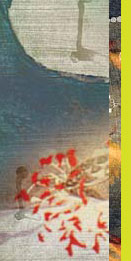Truce: Strategies for Post-Apocalyptic Computation
(Juried)

In their seminal paper, “Flying in Tune: Sexual recognition in mosquitoes”, Gabriella Gibson and and Ian Russell from the University of Greenwich discovered an inspiring phenomenon: male mosquitoes change their buzzing frequency to match that of female mosquitoes. This synchronization brings their wing beats to within a millisecond or less of one another. The authors suggest that this phenomenon facilitates mosquitoes’ ability to copulate mid-flight.
Truce exploits this phenomenon to engage living mosquitoes in song, inspired by the North Indian classical vocal tradition of Dhrupad. The installation explores reciprocal musical interactions between the mosquito and the computer. The computer produces a stimulus sound to which the mosquitoes synchronize. Subsequently, the computer sings a third voice that responds to the musical inflections of the mosquitoes’ buzz. These three voices come in and out of harmony depending on the mosquitoes' propensity to maintain sync with the stimulus signal.
Each mosquito is equipped with a loud-speaker that delivers the stimulus signal, a sensitive microphone for picking up the mosquito's buzz, a camera for a closer look at the insect, a kinetic component that allows the mosquito to rest every few minutes, and a light bulb that shows the mosquito’s activity.
Robin Meier
Ali Momeni
University of Minnesota


